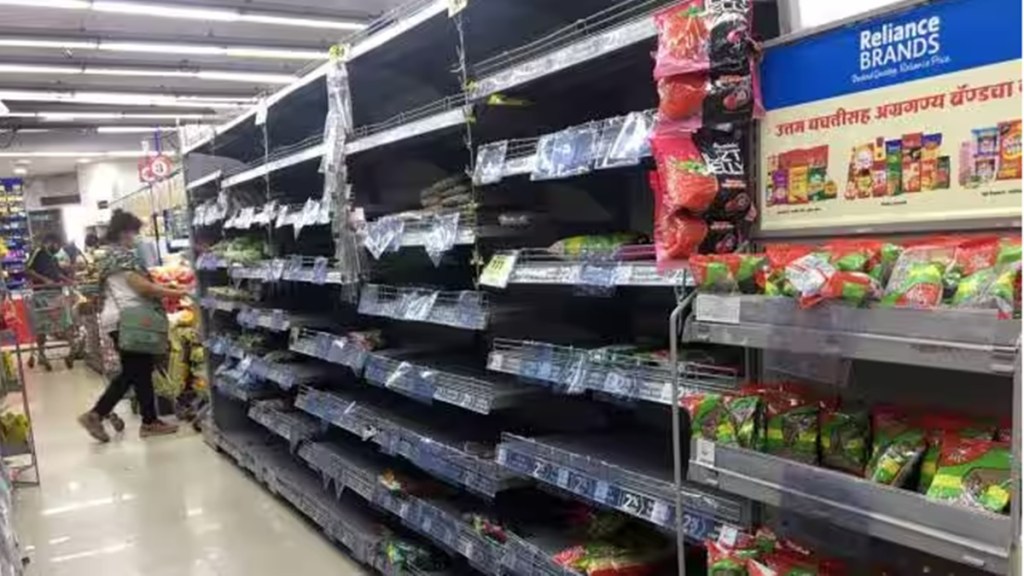Chief executives of top global and Indian fast-moving consumer goods (FMCG) companies see a gradual revival in the domestic FMCG market, as rural demand remains weak amid food inflation and weather uncertainty.
Management commentary in recent earnings calls and media interactions after the June quarter results suggests that while urban markets have been stable, the anticipated “green shoots” of recovery have not been visible in rural areas so far.
“The spectre of food inflation is going to remain,” Suresh Narayanan, chairman and managing director, Nestle India, said in a round table on Friday. “With the kind of torrential rains that are taking place, what impact it will have on winter crops is anybody’s guess,” he said, adding that price cuts of food products would be difficult in such a market.
While home and personal care companies have been cutting prices, rural offtake has been slower than expected.
Saugata Gupta, MD & CEO, Marico, said in an earnings call on Friday that FMCG growth in the June quarter was mixed, with domestic volume growth marred by one-offs. “The FMCG sector retained its positive sentiment from the preceding quarter. But growth remained urban-led, while rural consolidated on a lower base,” he said, adding that the spatial distribution of rainfall would be critical to rural incomes and therefore consumption.
This point was reiterated by top officials at Hindustan Unilever (HUL) and parent Unilever, who said that the June quarter saw rural volumes turn positive, albeit on a soft base.
“Rural market volume growth has just turned positive in the quarter and we are seeing sequential improvements. However, we need to be cognizant of the soft base that the market is lapping,” said Rohit Jawa, MD & CEO, HUL, in an earnings call last week.
“On a two-year basis, total market volumes are flat and rural market volumes have declined. We expect volumes to recover gradually due to the high level of cumulative inflation and the fact that consumption habits recover with a lag,” he said.
Unilever’s global CEO Hein Schumacher said he would be putting more emphasis on the company’s key markets, including India, China, US and Indonesia, to spur sales in the months ahead. Unilever derives 60% of its sales from emerging markets, which includes India, its second-largest market globally after the US. “I would like to see us continuing our agility, accountability and category focus,” Schumacher said about his first impressions since taking charge on July 1.
In a conversation with FE, Tata Consumer’s MD & CEO, Sunil D’Souza said that while he saw rural growth coming back in the June quarter, it was still not there yet.
“Historically, tea and salt have grown in mid to high single-digits in volume terms. We are still not there yet if you look at it from a pre-Covid lens. Having said that, we are in positive territory, which is good news,” he said about the FMCG market in the April-June period. D’Souza does see sentiment improving in the months ahead as the festive season draws near.
Most FMCG CEOs are counting on the second half of the financial year to get growth rates moving, when the traditional festive period may cajole consumers to loosen their purse strings, notably, in rural areas.
Coca-Cola and Mondelez International’s chief executives James Quincey and Dirk Van De Put each said in earnings calls last week that they were putting more heft behind distribution and marketing initiatives in countries such as India to take advantage of a consumption uptick.
“In India, business was unfavourably impacted by unseasonal rain and cooler temperatures in the quarter. However, the growth outlook remains intact. Customised promotions such as Sprite Joke-In-A-Bottle and the rollout of Schweppes Mojito (lemony drink) is off to a good start in India. These examples illustrate how our marketing transformation is coming to life,” Quincey said.
Dirk Van De Put said that Mondelez was adding over 100,000 to 200,000 stores every year in terms of distribution reach in India. “That is going to continue. By going broader, we can start to increase the range of our products that are available in stores,” he told investors about his plans for India.
Mondelez, like Nestle, has also laid out key investments for India including a Rs 4,000-crore outlay over the next four years. Nestle is planning to put in Rs 4,200 crore between 2023 and 2025 to increase manufacturing capacity in the country.
